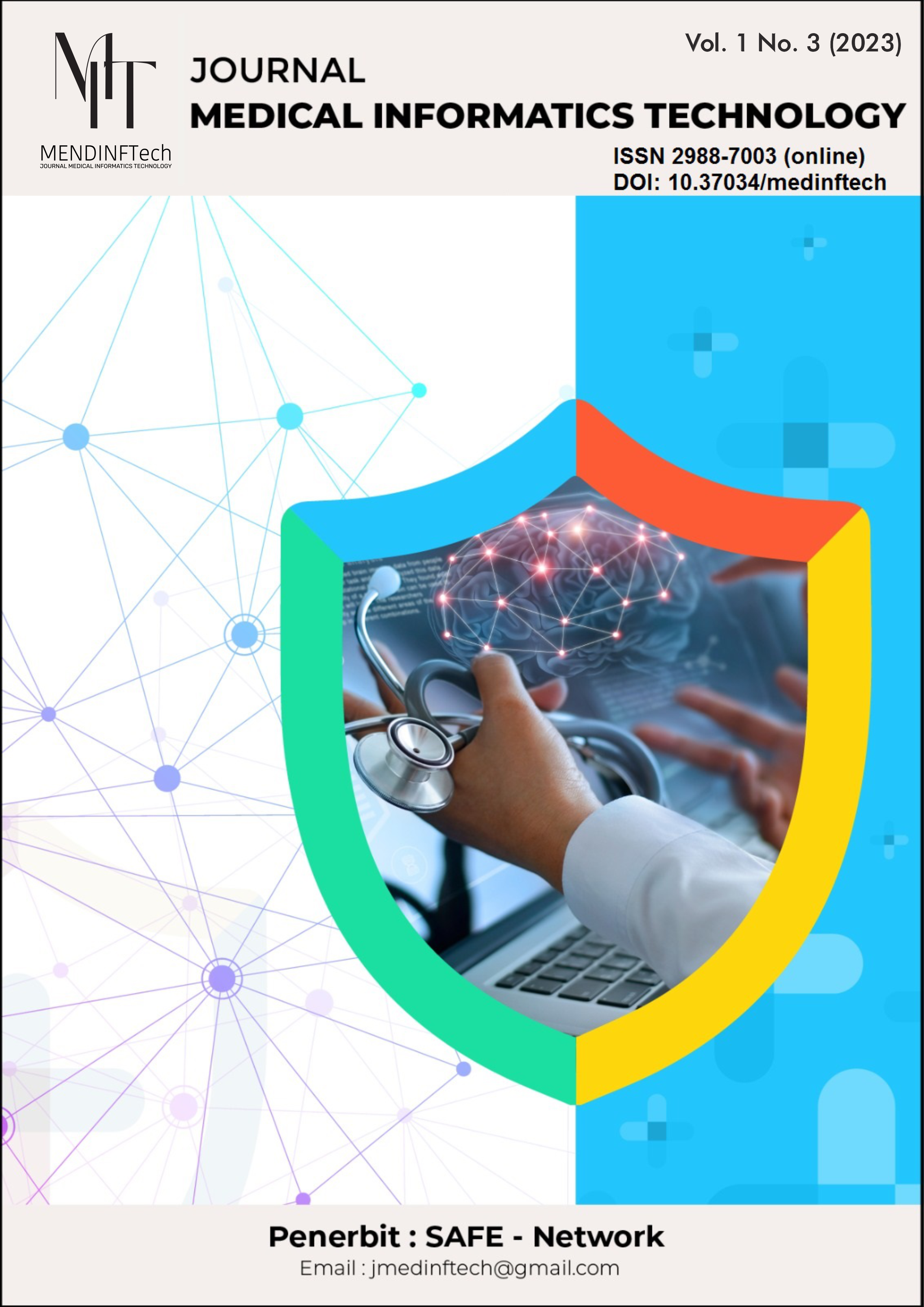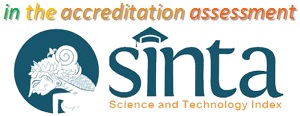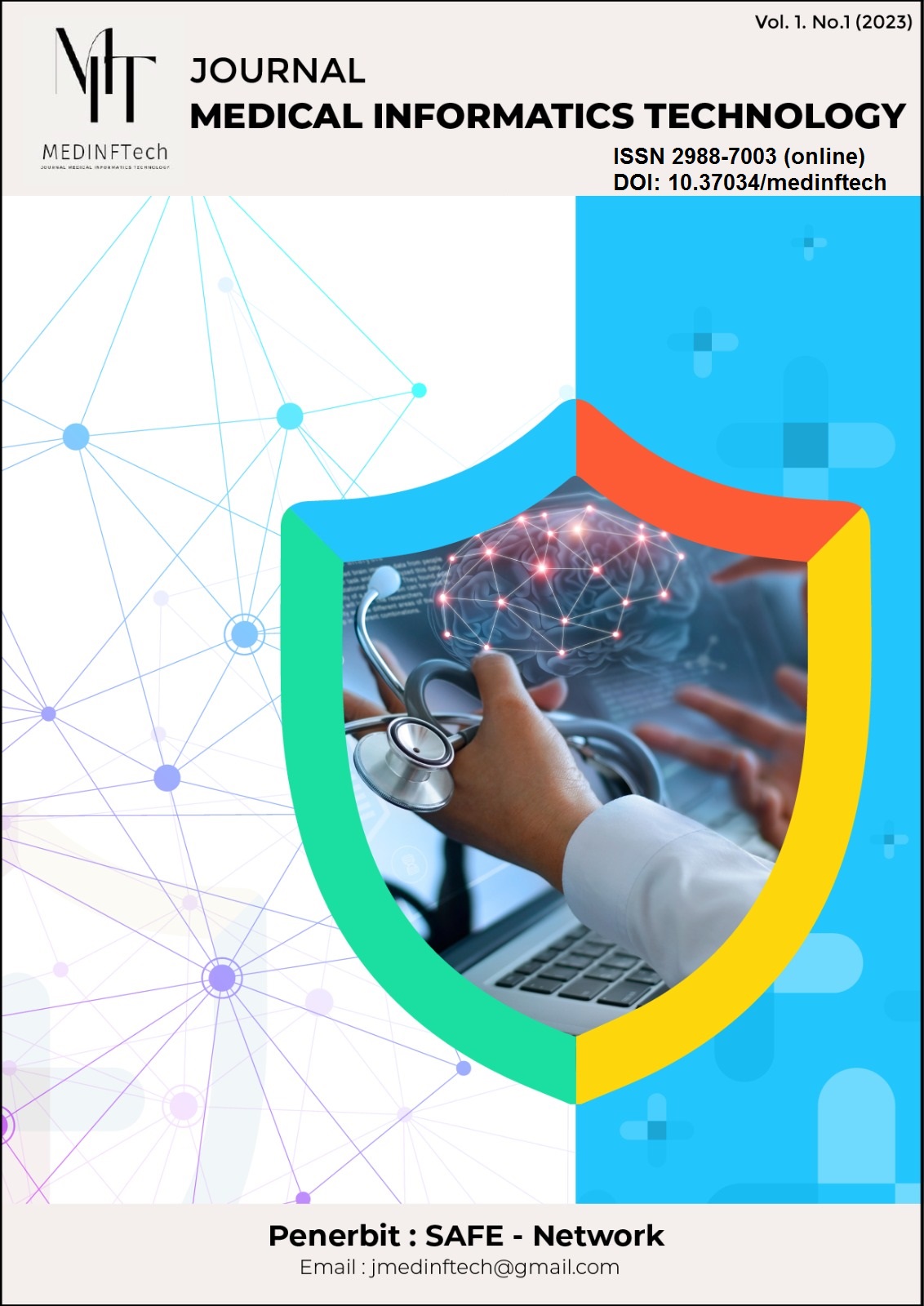The Relationship between Age, Education, and Maternal Employment with Exclusive Breastfeeding in Children Aged 6 - 23 Months in Kalirejo, Malang Regency
DOI:
https://doi.org/10.37034/medinftech.v1i3.17Keywords:
Relationship, Age, Education, Maternal Employment, Exclusive BreastfeedingAbstract
The target percentage of infants under 6 months old receiving exclusive breastfeeding is 40%. However, in 2020, in Kalirejo Sub-district, the number was 9.04%. This was presumably caused by the high number of working mothers. Therefore, this study was conducted to analyze the relationship between age, education, and occupation of mothers regarding exclusive breastfeeding in children aged 6-23 months in Kalirejo Sub-district, Malang Regency. The study design employed in this research was observational analytics with a cross-sectional design. The research population consisted of mothers residing in Kalirejo Sub-district, Malang Regency. The required sample size was 66 individuals. A questionnaire was used to collect research data. The required data was processed using SPSS software with the Chi-Square Test analysis technique. The result showed that 78.8% mothers were in the age group of 20-35%, and 21.2% were in the age group of >35 years. Based on the highest education level attained by the respondents, 1.5% had completed elementary school, 15.2% had completed junior high school, 57.6% had completed high school, and 25.8% had completed tertiary education. About 51.5% of respondents were employed, while 48.5% were not employed. The number of respondents' children receiving exclusive breastfeeding was 50%. The analysis indicated a relationship between occupation and exclusive breastfeeding with a p-value of 0.049 and a strength of relationship between the two variables at 0.236.Downloads
References
“Laporan Kinerja 2021,” Jakarta, 2021.
A. T. Issa and R. Tahergorabi, “Milk Bacteria and Gastrointestinal Tract: Microbial Composition of Milk,” in Dietary Interventions in Gastrointestinal Diseases: Foods, Nutrients, and Dietary Supplements, R. R. Watson and V. R. Preedy, Eds., London: Academic Press, 2019, pp. 265–275. doi: 10.1016/B978-0-12-814468-8.00022-3.
“Exclusive breastfeeding for six months best for babies everywhere,” WHO, 2011. https://www.who.int/news/item/15-01-2011-exclusive-breastfeeding-for-six-months-best-for-babies-everywhere (accessed Sep. 03, 2023).
L. Hamidah, “Gambaran Faktor-Faktor Perilaku Ibu terhadap Pemberian ASI dengan Pendekatan Health Belief Model di Wilayah Kerja Puskesmas Setu Tangerang Selatan,” UIN Syarif Hidayatullah, Jakarta, 2017. Accessed: Sep. 02, 2023. [Online]. Available: https://repository.uinjkt.ac.id/dspace/handle/123456789/36736
“Profil Kesehatan Kelurahan Kalirejo Tahun 2020,” Malang, 2020.
F. Bahriyah, A. K. Jaelani, and M. Putri, “Hubungan Pekerjaan Ibu Terhadap Pemberian ASI Eksklusif pada Bayi di Wilayah Kerja Puskesmas Sipayung,” Jurnal Endurance, vol. 2, no. 2, p. 113, Jun. 2017, doi: 10.22216/jen.v2i2.1699.
D. A. Pitaloka, R. Abrory, and A. D. Pramita, “Hubungan antara Pengetahuan dan Pendidikan Ibu dengan Pemberian ASI Eksklusif di Desa Kedungrejo Kecamatan Waru Kabupaten Sidoarjo,” Amerta Nutrition, vol. 2, no. 3, p. 265, Aug. 2018, doi: 10.20473/amnt.v2i3.2018.265-270.
R. Asdi, “Hubungan Pengetahuan dan Status Pekerjaan Ibu dengan Pemberian ASI Eksklusif di Desa Sambi Kecamatan Sambi Boyolali,” Universitas Muhammadiyah Surakarta, Surakarta, 2018.
N. Kusumayanti and T. S. Nindya, “Hubungan Dukungan Suami dengan Pemberian ASI Eksklusif di Daerah Perdesaan,” Media Gizi Indonesia, vol. 12, no. 2, p. 98, Apr. 2018, doi: 10.20473/mgi.v12i2.98-106.
S. Rahayu, “Hubungan Usia Ibu dengan Pemberian ASI Eksklusif di Desa Beji Kecamatan Andong Kabupaten Boyolalu,” Politeknik Kementerian Kesehatan Yogyakarta, Yogyakarta, 2019.
R. Afriyani, I. Savitri, and N. Sa’adah, “Pengaruh Pemberian ASI Eksklusif di BPM Maimunah Palembang,” Jurnal Kesehatan, vol. 9, no. 2, p. 331, Sep. 2018, doi: 10.26630/jk.v9i2.640.
I. Domili, S. D. Suleman, F. Y. Arbie, M. A. Anasiru, and R. Labatjo, “Karakteristik Ibu dan Pemberian ASI Eksklusif dengan Kejadian Stunting di Kelurahan Padebuolo Kota Gorontalo,” AcTion: Aceh Nutrition Journal, vol. 6, no. 1, p. 25, May 2021, doi: 10.30867/action.v6i1.359.
M. A. Rohman, “Status Gizi dan Usia Ibu Mempengaruhi Pemberian ASI Ekslusif,” Universitas Muhamadiyah Surakarta, Surakarta, 2020.
H. R. Ulfah and F. S. Nugroho, “Hubungan Usia, Pekerjaan dan Pendidikan Ibu dengan Pemberian ASI Eksklusif,” Intan Husada Jurnal Ilmu Keperawatan, vol. 8, no. 1, pp. 9–18, Jan. 2020, doi: 10.52236/ih.v8i1.171.
L. N. Fakhidah and F. H. Palupi, “Analisis Faktor yang Mempengaruhi Pemberian ASI Eksklusif,” Jurnal Kebidanan, vol. 10, no. 02, p. 181, Dec. 2018, doi: 10.35872/jurkeb.v10i02.291.
R. Subekti and D. A. Faidah, “Analisis Faktor yang Berhubungan dengan Kelancaran Pengeluaran ASI pada Ibu Postpartum Normal,” Prosiding Seminar Nasional LPPM UMP, vol. 1, no. 0, pp. 140–147, Dec. 2019, Accessed: Sep. 03, 2023. [Online]. Available: http://semnaslppm.ump.ac.id/index.php/semnaslppm/article/view/28/28
D. Pangastuti, “Hubungan Inisiasi Menyusui Dini terhadap Pemberian ASI Eksklusif pada Bayi,” Universitas Trisakti, Jakarta, 2019. Accessed: Sep. 02, 2023. [Online]. Available: http://repository.trisakti.ac.id/usaktiana/index.php/home/detail/detail_koleksi/0/SKR/judul/00000000000000099399/0
A. Rahmawati and N. Wahyuningati, “Tipe Eksklusifitas Pemberian ASI Berdasarkan Paritas dan Usia Ibu Menyusui,” Jurnal Citra Keperawatan, vol. 8, no. 2, pp. 71–78, Dec. 2020, doi: 10.31964/JCK.V8I2.140.
S. Notoatmodjo, Pendidikan dan Perilaku Kesehatan. Jakarta: Rineka Cipta, 2011.
J. F. Raj, Y. D. Fara, A. T. Mayasari, and A. Abdullah, “Faktor yang Mempengaruhi Pemberian ASI Eksklusif,” Wellness And Healthy Magazine, vol. 2, no. 2, pp. 283–291, Aug. 2020, doi: 10.30604/well.022.82000115.
A. D. Laksono, R. D. Wulandari, M. Ibad, and I. Kusrini, “The Effects of Mother’s Education on Achieving Exclusive Breastfeeding in Indonesia,” BMC Public Health, vol. 21, no. 1, p. 14, Dec. 2021, doi: 10.1186/s12889-020-10018-7.
E. Pangestika, “Hubungan Tingkat Pendidikan Ibu dengan Praktik Pemberian ASI Eksklusif pada Ibu yang Melahirkan di RSUD Wates Kulon Progo,” Sekolah Tinggi Ilmu Kesehatan Jenderal Achmad Yani Yogyakarta, Yogyakarta, 2016.
U. Arifa, “Pengaruh Perawatan Payudara Terhadap Produksi ASI di RSU Sawerigading Kota Palopo,” 2018, doi: 10.31227/OSF.IO/4XZCB.
A. Dahlan, F. Mubin, and D. N. Mustika, “Hubungan Status Pekerjaan dengan Pemberian ASI Eksklusif di Kelurahan Palebon Kecamatan Pedurungan Kota Semarang,” Jurnal Kebidanan, vol. 2, no. 2, pp. 56–60, 2013, doi: 10.26714/JK.2.2.2013.56-60.
R. Ramli, “Correlation of Mothers’ Knowledge and Employment Status with Exclusive Breastfeeding in Sidotopo,” Jurnal PROMKES, vol. 8, no. 1, p. 36, May 2020, doi: 10.20473/jpk.V8.I1.2020.36-46.
Peraturan Pemerintah Republik Indonesia Nomor 33 Tahun 2012 tentang Pemberian Air Susu Ibu Eksklusif. Indonesia, 2012.
T. Windayani, “Penegakan Hukum Ketentuan Pidana Pasal 200 UU Nomor 36 Tahun 2009 Tentang Kesehatan,” Jurnal Hukum Samudra Keadilan, vol. 13, no. 1, pp. 83–101, Aug. 2018, doi: 10.33059/jhsk.v13i1.698.









